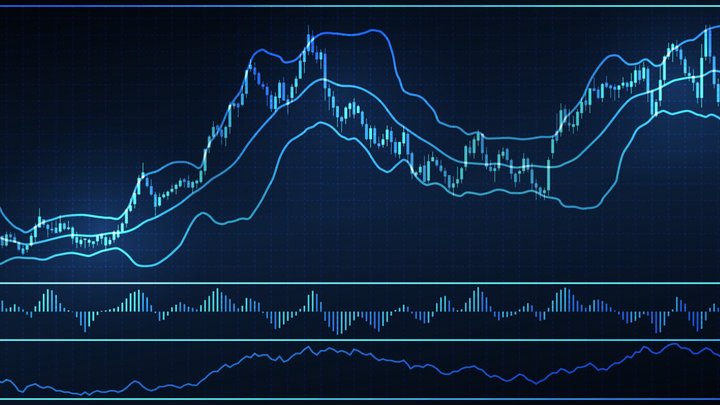
A clearly defined stop limit is crucial when news trading. This will allow you to reduce your downside risk, as well as help you exit bad trades quickly. The five-minute charts should be used in advance of the release Non-FarmPayrolls. This report could have an adverse effect on USD crosses. However, traders who are anticipating the release of the Non-Farm Payrolls should use the five-minute chart to trade before the release.
High-impact news
There are many economic reports and releases that can impact the direction of currency markets. However, forex trading news with high impact is not always based solely on the calendar. Wild price movements can be caused by unpredicted events, such as the announcement of an economic stimulus package by the US president or terrorist attacks. Because global markets are so interconnected the US economy's slowdown can impact other parts of the world. In this case, traders price in the risk of war and slowing economic growth.
Currency prices can be affected by news about major exporters or currencies. News about the prices of commodities such as natural gas can impact other currencies' currency rates. Price of currency can be affected by the exports of large quantities of raw materials like crude oil, gold and other precious metals. These currencies are often affected in part by issues that affect supply and demande.

Low-impact News
The best way to trade currencies for Forex traders is through low-impact news. Although low-impact news is often ignored, it contains important information about a country's economy, as well as future prospects. A market structure is formed when the lower timeframe and the higher timeframe work together. It is the fundamentals that give this information its power. Trader should be able to exploit low-impact data to their advantage.
However, it is important to know that high-impact news does not have a similar effect on all currencies, so it is important to understand what your market will do when it receives such news. The German Flash Manufacturing PMI will have a greater impact on the Euro than the French Flemish Flash ManufacturingPMI. You should also keep track of the economic calendar so you are not missing any important news events.
Trades during periods of uncertainty or consolidation
If stocks or other indexes are trading in a wide range, this is called a period de consolidation or uncertainty. This period is when stocks or indexes are trading in ranges. A breakout can be very significant but it is impossible to predict a breakout. But, you can still follow indicators that show a breakout's strength and buy or trade in anticipation. This article will provide strategies and information to help you trade during periods of uncertainty or consolidation.
Strategies to trade on top of the news
Traders who want to profit from the latest economic report must use strategies that trade on the back of the news. Trader will often buy assets during the rumor phase. Once the news becomes public, they will then sell the positions. Markets can move in any direction if the news is reported. Trader should stay away from assets that are rumored to be affected by the news. Instead, traders should purchase assets based upon anticipated cash flows and then sell once the news is confirmed.

Trading on the news is like any other trading strategy. It requires patience. It's hard to predict when news will hit the markets, making it even more difficult for traders to trade on the news. Wait at least 10 minutes after the news is released to let the market shake itself out. Historical charts show that market reactions to news are usually negative for just a few minutes. This failure often reverses quickly and traders can profit from the real market movement.
FAQ
What is the difference between non-marketable and marketable securities?
The key differences between the two are that non-marketable security have lower liquidity, lower trading volumes and higher transaction fees. Marketable securities can be traded on exchanges. They have more liquidity and trade volume. Because they trade 24/7, they offer better price discovery and liquidity. However, there are some exceptions to the rule. Some mutual funds are not open to public trading and are therefore only available to institutional investors.
Non-marketable security tend to be more risky then marketable. They have lower yields and need higher initial capital deposits. Marketable securities tend to be safer and easier than non-marketable securities.
A large corporation may have a better chance of repaying a bond than one issued to a small company. The reason is that the former will likely have a strong financial position, while the latter may not.
Because they can make higher portfolio returns, investment companies prefer to hold marketable securities.
How can I find a great investment company?
It is important to find one that charges low fees, provides high-quality administration, and offers a diverse portfolio. Commonly, fees are charged depending on the security that you hold in your account. While some companies do not charge any fees for cash holding, others charge a flat fee per annum regardless of how much you deposit. Others charge a percentage based on your total assets.
You should also find out what kind of performance history they have. You might not choose a company with a poor track-record. Companies with low net asset values (NAVs) or extremely volatile NAVs should be avoided.
Finally, you need to check their investment philosophy. A company that invests in high-return investments should be open to taking risks. If they are not willing to take on risks, they might not be able achieve your expectations.
What are the benefits to investing through a mutual funds?
-
Low cost – buying shares directly from companies is costly. A mutual fund can be cheaper than buying shares directly.
-
Diversification: Most mutual funds have a wide range of securities. When one type of security loses value, the others will rise.
-
Professional management - professional mangers ensure that the fund only holds securities that are compatible with its objectives.
-
Liquidity – mutual funds provide instant access to cash. You can withdraw your money at any time.
-
Tax efficiency- Mutual funds can be tax efficient. As a result, you don't have to worry about capital gains or losses until you sell your shares.
-
For buying or selling shares, there are no transaction costs and there are not any commissions.
-
Mutual funds can be used easily - they are very easy to invest. All you need is a bank account and some money.
-
Flexibility: You can easily change your holdings without incurring additional charges.
-
Access to information- You can find out all about the fund and what it is doing.
-
Investment advice – you can ask questions to the fund manager and get their answers.
-
Security - You know exactly what type of security you have.
-
Control - The fund can be controlled in how it invests.
-
Portfolio tracking: You can track your portfolio's performance over time.
-
Ease of withdrawal - you can easily take money out of the fund.
There are disadvantages to investing through mutual funds
-
Limited investment opportunities - mutual funds may not offer all investment opportunities.
-
High expense ratio. The expenses associated with owning mutual fund shares include brokerage fees, administrative costs, and operating charges. These expenses will eat into your returns.
-
Lack of liquidity - many mutual funds do not accept deposits. These mutual funds must be purchased using cash. This limits your investment options.
-
Poor customer support - customers cannot complain to a single person about issues with mutual funds. Instead, you must deal with the fund's salespeople, brokers, and administrators.
-
Risky - if the fund becomes insolvent, you could lose everything.
What is a REIT?
An entity called a real estate investment trust (REIT), is one that holds income-producing properties like apartment buildings, shopping centers and office buildings. These publicly traded companies pay dividends rather than paying corporate taxes.
They are very similar to corporations, except they own property and not produce goods.
Statistics
- Ratchet down that 10% if you don't yet have a healthy emergency fund and 10% to 15% of your income funneled into a retirement savings account. (nerdwallet.com)
- US resident who opens a new IBKR Pro individual or joint account receives a 0.25% rate reduction on margin loans. (nerdwallet.com)
- Even if you find talent for trading stocks, allocating more than 10% of your portfolio to an individual stock can expose your savings to too much volatility. (nerdwallet.com)
- For instance, an individual or entity that owns 100,000 shares of a company with one million outstanding shares would have a 10% ownership stake. (investopedia.com)
External Links
How To
How to create a trading plan
A trading plan helps you manage your money effectively. It helps you understand your financial situation and goals.
Before setting up a trading plan, you should consider what you want to achieve. It may be to earn more, save money, or reduce your spending. If you're saving money you might choose to invest in bonds and shares. If you're earning interest, you could put some into a savings account or buy a house. Perhaps you would like to travel or buy something nicer if you have less money.
Once you decide what you want to do, you'll need a starting point. This will depend on where and how much you have to start with. Consider how much income you have each month or week. The amount you take home after tax is called your income.
Next, save enough money for your expenses. These include rent, food and travel costs. These all add up to your monthly expense.
You will need to calculate how much money you have left at the end each month. This is your net disposable income.
You're now able to determine how to spend your money the most efficiently.
To get started, you can download one on the internet. You could also ask someone who is familiar with investing to guide you in building one.
Here's an example: This simple spreadsheet can be opened in Microsoft Excel.
This will show all of your income and expenses so far. This includes your current bank balance, as well an investment portfolio.
Here's another example. This one was designed by a financial planner.
This calculator will show you how to determine the risk you are willing to take.
Remember, you can't predict the future. Instead, think about how you can make your money work for you today.